Last Updated on July 10, 2022 by
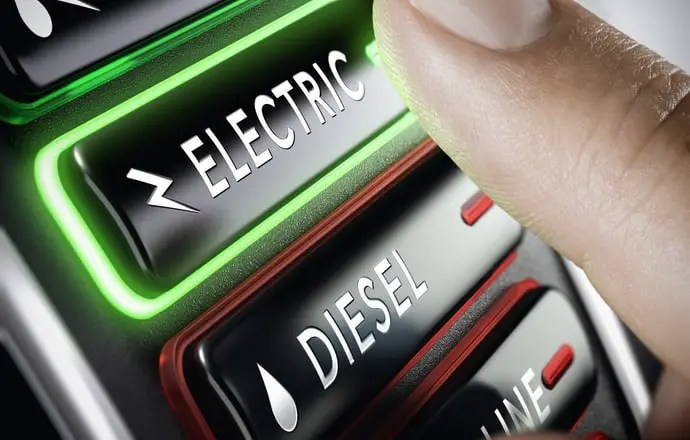
The government has now set a target date of 2030 by which all sales of new cars will be zero emissions capable (battery electric, plug-in hybrid electric or hydrogen). However, currently only around 5% of new car sales are electric. Why is this? Is it a general reluctance to embrace something new, or are there genuine barriers or limitations with electric vehicles? Here are ten reasons why consumers may be reluctant to purchase an electric vehicle, with some commentary on how things are changing over time.
Issues Facing The Adoption of EVs
1. Cost of A New Vehicle
While the cost of a new electric vehicle (EV) has declined, they are more expensive to buy than their conventional petrol or diesel equivalent. Current rapidly-growing sales are generating an expectation that prices will reduce. A look at the cheapest models on the market reveals a number available for less than £18,000, soon moving up to £20,000 or more. The second-hand EV market is still in its infancy, although WhatCar lists some models available from the £10,000 mark. You get what you pay for, though; cars at the bottom end price-wise have a more limited range and longer charge times, and in a dynamic market where technological improvements are coming along all the time, a used car will lack the most recent performance innovations.
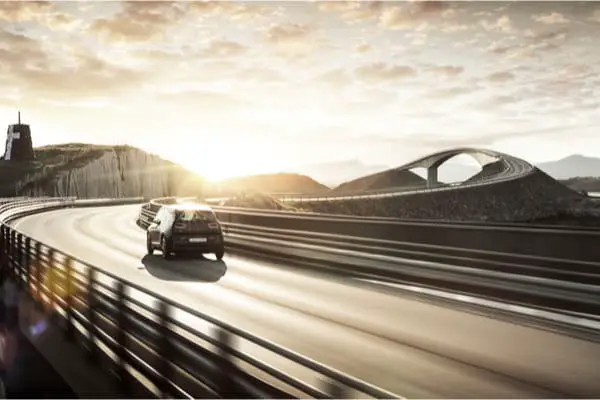
One of the biggest influencers of cost is the price of the lithium-ion battery. There is some expectation that as the technology improves and economies of scale develop, costs will reduce. However, some of the materials required such as lithium itself are in short supply which might limit this effect. The bigger the battery and the more charge it holds, the more expensive it is. This results in a close link between car prices and range (see below).
While the car itself is more expensive, recent research is now showing that across the lifetime of the car (assuming it will be on the road for around 14 years), electric cars are now marginally cheaper than conventional fuel cars. This is because fuel and servicing costs are so much lower, an effect helped by various government grants available for vehicle purchase and installing home chargers. EVs are also exempt from road tax. As we move towards the 2030 target, more government incentives may come along; the government’s Office for Low Emissions will feature these.
2. Home Charging Points
For households with a garage or driveway this is less of a barrier; you would need to install a reliable home charging point, which can cost up to £1,000, but will probably be much less, especially with government grants potentially being available to help out.
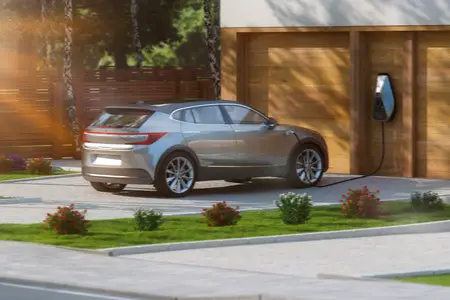
Anyone living in a flat or a home with no dedicated parking will need to know that their EV can be charged somewhere convenient for either home or work. Using a cable to charge a car parked on the street is an option for some, but trailing a cable across the pavement can be problematic. However, other options such as lamp post chargers and rapid charge points, some with dedicated parking spaces, are increasingly available. This is a rapidly changing landscape supported by government grants and also by suppliers stepping forward, not just car makers but electricity suppliers as well. In many places planning laws require electric charge points to service new-build homes, and many employers are also providing them, which makes a daily commute much more feasible.
Some research is required, and resources such as Zap-Map are helpful. However, charge points won’t be evenly distributed and there are likely to be more in cities and towns than more rural locations, at least for the time being.
3. Charging Times
A household charge point will typically need 8 hours to fully charge the car, but this varies considerably by model, so it needs weighing up when choosing a vehicle. For short journeys, such as a daily commute or school run, with charging overnight or during the day, EVs are highly feasible. Faster options are increasingly available, though.
Rapid charge points might enable an 80% charge in 20-30 minutes and for most models a full charge in under an hour. These are now widely available at motorway service stations and increasingly in towns and cities. Vehicles need to have rapid-charge capability to take advantage of this, something else that needs checking when considering which EV to buy.
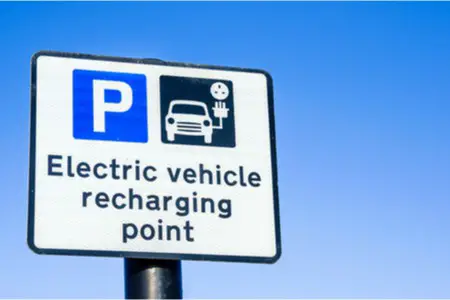
Fast charge points are typically found in public places such as car parks, and depending on model might take 1-4 hours to charge.
As detailed on Zap-Map, the UK currently has more than 20 different networks, each with different types of charging point, membership and cost options. Generally, the faster the charge, the higher the cost, though costs even at the top end remain lower than filling up with petrol or diesel.
4. Range and Public Charging Points
For longer journeys, the combined issues of range and availability of charge points come together. “Range anxiety” is considered a major player in consumer reluctance to go electric. At the cheaper end of the market, small and older models may still only have a range of 50 to 80 miles – and this is heavily affected by cold weather, when having the heating on could reduce the theoretical range by as much as 40%.
EV ranges are increasing. At the higher end, they are now above 200 miles and sometimes as high as 300, comparable with the capacity of a tank of petrol. However, petrol stations are more abundant than charge points, so to make a long journey you need to be confident you can “fill up” before running out of juice. Again, the landscape here is changing fast. Almost all (96%) of motorway service stations now have rapid charge points, enabling a charge of 30-40 minutes at a cost of around £8-9. A 30-minute charge at one of these points will give you around 100 miles, depending on model. Ecotricity has positioned its Electric Highway charge points along many of the major highways up and down the country, not just at service stations, and there are other networks too (see Zap-Map, above).

While it’s not as quick and effortless as a petrol stop and requires some planning ahead, it’s getting there. Reassuringly, the AA reports that being called out to an EV because of a flat battery only accounts for a small proportion of calls from electric car drivers.
5. Servicing and Repairs
Electric vehicles need to be serviced as frequently as any other vehicle, but not all local mechanics will have the expertise to do this, so the availability of servicing might be more limited and prices therefore higher. On the plus side, electric cars have fewer moving parts that need to be replaced, so overall servicing costs tend to be cheaper. Some research suggests that taken together, the costs of servicing and maintaining an EV can be as much as 23% cheaper than a conventional car. The battery will probably need replacing at some point (about every 8 years, so once during an average vehicle lifetime of around 14 years) but many of the things that go awry in a conventional engine just aren’t an issue for electric vehicles.
Breakdown cover is available – the AA includes EVs in its cover as standard, with no additional cost. They offer to tow the vehicle to the nearest charge point, and are rolling out mobile charging units which will provide enough juice to get to safety. There is some question mark about whether all EVs can be safely towed, as the battery makes the whole car a lot heavier than its conventional equivalent, but the AA has recently upgraded its vehicles so that they can tow heavier vehicles. Research right at the outset is required, but once again, it’s an area which is evolving as the market grows.

6. Reliability and Insurance
Electric vehicle technology is still relatively new. As the number of vehicles on the road goes up, and their age increases, the industry will gain more and more knowledge of how they work in practice which will feed into technology improvements. This relative information gap compared to conventional vehicles has implications; the cost of insuring an EV is higher than its petrol or diesel equivalent. However, in recent years, as insurance companies have gathered increasing amounts of data from their customers, the insurance mark-up has declined considerably.
The evidence seems to be growing that EVs compare relatively well to their combustion equivalents in terms of insurance risk. As far as premiums are concerned, you are better to keep shopping around to take advantage as the market changes.
7. Choice of Make, Model and Vehicle Type
While this remains more limited than for conventional cars, there’s now a much greater range to choose from, including SUVs, high-performance cars, mid-range family cars and compact cars. Iconic brands such as Land Rover and Mini now have electric versions (although the Land Rover and Range Rover ranges only include plug-in hybrids so far).

As discussed, the used market is still small, but the second hand market is expected to expand in line with market growth overall.
8. Maximum Speeds
Electric vehicles have been somewhat lampooned in times gone by, but the technology itself doesn’t limit performance; models right at the top of the range can accelerate from 0-60 in a terrifying less than 2 seconds. At the cheap or older end of the market, maximum speeds can be limited, but a model above the £20,000 mark will be likely to have an electronically-set top speed of 80mph or above. For example, the Mini Electric can make 0-62mph in 7.3 seconds and has a top speed of 93mph.
9. Theft
While EV charging cables may need protection from theft, there’s little evidence to suggest that electric cars themselves are prone to theft. In the USA, Teslas are amongst the brands least likely to be stolen. This might be where limited range is an advantage, or it may be that EVs don’t yet feature in likely-to-be-stolen lists because they still make up such a small proportion of all vehicles on the road.
Given that insurance premiums are reducing, this seems an area of less concern, but again things might change as the market grows.
10. Other Environmental Harms
EVs produce zero exhaust emissions, but we want to be sure we are doing the right thing taking all aspects of manufacture and use into account. Issues have been raised with the sourcing of lithium, a crucial battery component which comes from cobalt, the mining of which in countries such as Tibet and Bolivia has been linked with child labour. Currently lithium-ion appears to be the only contender in terms of battery type, although ongoing R&D might reveal other options.
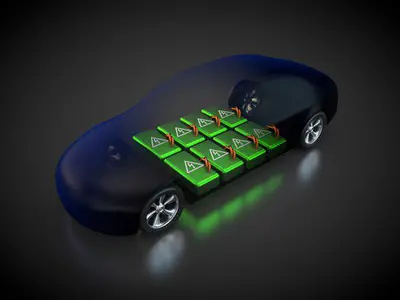
EV evangelists would point out how this compares to the known harms associated with
There are also limited options for recycling these batteries, which have a fixed lifespan. However, a lithium-ion battery is fully recyclable, it’s just that there aren’t many suppliers currently offering this, and it’s reasonable to expect this to change as EV use increases.
Looking Ahead
It was as recently as February 2020 that the government moved its target forward from 2040 to 2030 for banning the sale of new conventional petrol or diesel powered vehicles. As long as this clear government direction remains in place with proper incentives to back it up, the EV market will continue to evolve rapidly. Manufacturers and policy makers are well aware of the potential barriers, and we can expect these to be addressed as much as possible through technological development and greater infrastructure. There is ample evidence that the sector is investing heavily in the future of EVs and will want these challenges resolved.
The chance remains that the massively increased usage of EVs we are witnessing right now might reveal issues and problems we don’t yet know about! But for now the momentum is in place to bring about the improvements needed for EVs to become the mainstream.
